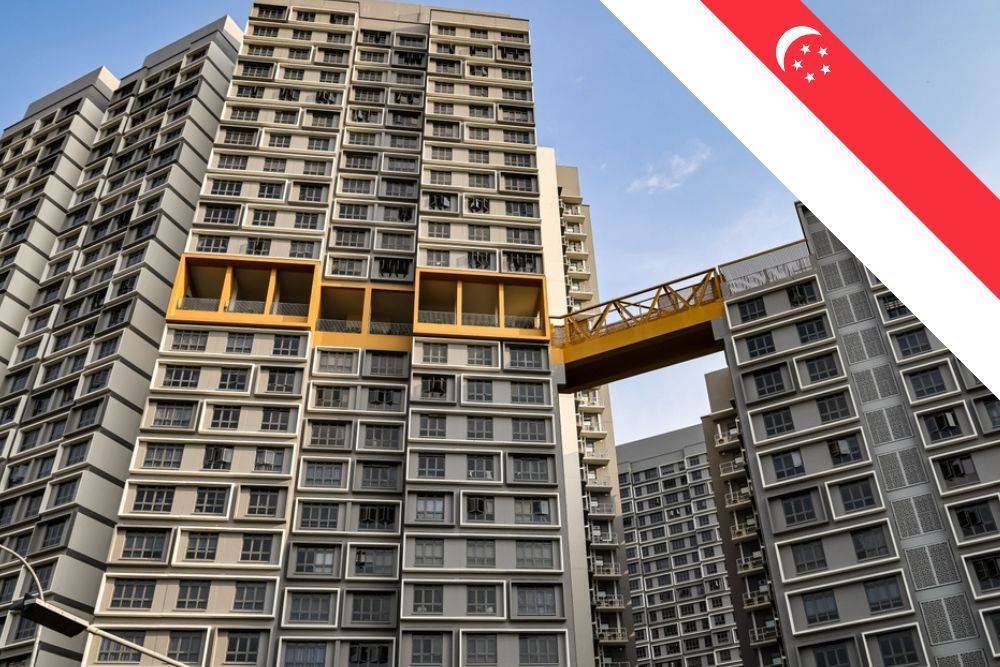For new condo and HDB owners, the excitement of moving into a freshly renovated home can quickly turn into concern due to the presence of formaldehyde.
This chemical, commonly found in wood furnishings, can pose significant health risks. But how worried should homeowners be? Here’s a closer look at formaldehyde, its dangers, and what new homeowners can do to protect themselves.
Case Study: A Family’s Nightmare
When Ms. Ena Lee and her family moved into their new five-room flat in Hougang, they quickly noticed something was wrong. Her children frequently fell ill, with one child experiencing continuous sickness for two months. It wasn’t until a friend, an architect, identified a strong formaldehyde smell in their cabinets that they realized the cause of their problems. Despite initial dismissals from their interior design firm, further investigation by an air quality specialist revealed dangerously high levels of formaldehyde, necessitating expensive treatment to reduce the chemical to safe levels.
Increasing Incidents and Demand for Solutions
According to indoor removal specialists like HelpToClean and LAF Environmental, the number of homeowners seeking professional help to address formaldehyde issues has significantly risen. HelpToClean reports handling about 80 cases per month, a 70% increase compared to last year. This spike correlates with the popularity of wood furnishings, often made from plywood coated with laminate finishes that contain formaldehyde.
“For long-term effects, there are studies that have shown that formaldehyde is a carcinogen, so it can cause cancers like nasopharyngeal cancer or leukaemia,” said Dr Jimmy Chew, family physician and CEO of OneCare Medical.
Doctors Medical Channel Asia spoke to mentioned that they do not see many such cases. One such doctor is Dr Jowell Cheng, GP at J Medical in Bidadari. He shared that “I have not seen patients complaining of eye or breathing issues in my clinic, maybe because the residents already moved in last year. The effects of formaldehyde are also not widely known, so patients also may not draw a link when they have symptoms.”
What Is Formaldehyde?
Formaldehyde is a chemical widely used for its preservative qualities, making it a staple in the manufacture of wood products, glues, paints, and coatings. It is found in many household items such as plywood, particleboards, medium-density fiberboards, and even textiles. While it contributes to the strength and durability of these materials, it poses health risks when released into the air through a process known as off-gassing.
Health Risks of Exposure
Short-term exposure can cause skin irritation, eye soreness, and respiratory issues such as bronchitis and asthma attacks. Long-term exposure is even more concerning. The chemical is classified as a carcinogen that can potentially cause cancers like nasopharyngeal cancer and leukaemia. Formaldehyde disrupts cell membranes and destroys proteins in the body, leading to various health complications.
Symptoms of Exposure
Symptoms of formaldehyde exposure include irritation of the eyes, nose, and throat, cough, chest pain, shortness of breath, and wheezing. Higher exposure levels can result in significant lower respiratory tract inflammation and severe pulmonary injury. Prolonged exposure increases the risk of cancer.
How Formaldehyde Enters the Home
Formaldehyde can enter the home through various means:
- Inhalation: The most common route, occurring in environments with formaldehyde-containing products or during combustion processes.
- Skin Contact: Direct contact with formaldehyde solutions can cause skin irritation and absorption.
- Ingestion: Less common, but possible if formaldehyde-contaminated food or water is consumed.
Mitigating Risks
To manage formaldehyde levels, homeowners should:
- Ensure proper ventilation, especially when introducing new products.
- Use air purifiers equipped with formaldehyde filters.
- Opt for low-emission materials and furnishings.
- Maintain moderate humidity levels to reduce its release.
Professional Help and Self-Testing
Hiring a professional indoor air quality consultant is the most reliable way to measure levels accurately, though it can be costly. Self-test kits are available but may not provide results as precise as professional testing. Dr Steve Yang from Mount Elizabeth Hospital advises that if you can smell formaldehyde, it’s present in the air, and immediate action should be taken. “There are self-test kits available, but the results might not be comparable with tests done by qualified professionals, as some kits react to a lot of common gases” said Dr Yang.
Respiratory physician Dr Chew Huck Chin of Mount Elizabeth Novena Hospital suggested several methods to deal with this risk. He suggested “opt for low-emission materials and furnishings to minimise formaldehyde emissions. Additionally, maintain moderate humidity levels to help reduce the release of formaldehyde from indoor sources.”
Conclusion
Formaldehyde poses significant health risks, especially for new homeowners who may be exposed to high levels from new furniture and renovation materials. Ensuring proper ventilation, using air purifiers, and choosing low-emission products are crucial steps in maintaining a safe indoor environment. For those experiencing symptoms or concerned about accidental exposure, seeking professional assessment and medical advice is essential.
Have a pressing question for a doctor? Medical Channel Asia has launched a community forum page where you can get questions answered by a medical specialist. Visit the community forum here.

